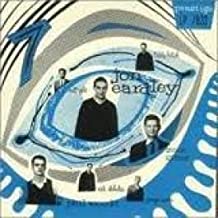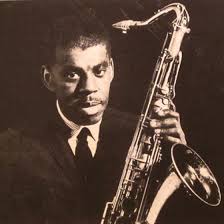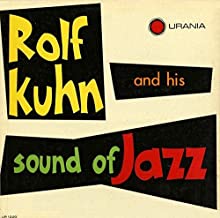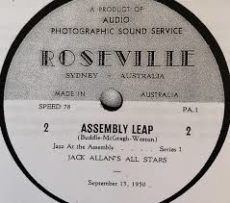
Daily Dose Of Jazz…Trumpet
Jon Eardley was born on September 30, 1928 in Altoona, Pennsylvania and first started on trumpet at the age of 11. His father played in the Paul Whiteman Orchestra. From the age of eighteen, he played1946 to 1949 he played in the Air Force Band in Washington, D.C., then led with his own quartet in D.C. from 1950 to 1953.
A move to New York City in 1953 got him introduced to the jazz scene. The following year he played with Phil Woods, then left for Gerry Mulligan for three years, and during that time played with Hal McIntyre. Returning to his hometown, Jon played there until 1963, when he moved to Europe and settled for a time in Belgium.
1969 saw his next residency in Cologne, Germany where he played with Harald Banter and Chet Baker and working through the 1980s. The last years before death he played in the WDR Big Band Cologne, Germany. Trumpeter Jon Eardley passed away on April 1, 1991 in Lambermont, near Verviers, Belgium.
More Posts: bandleader,history,instrumental,jazz,music,trumpet

Three Wishes
What Roland Alexander told Nica his three wishes were when the inquiry came his way was:
-
-
“Creation.”
-
“Peace.”
- “More creation.”
-
*Excerpt from Three Wishes: An Intimate Look at Jazz Greats ~ Compiled and Photographed by Pannonica de Koenigswarter
More Posts: baroness,history,instrumental,jazz,music,pannonica,piano,saxophone,three,wishes

Daily Dose Of Jazz…
Rolf Kühn was born on September 29, 1929 in Köln, Germany, the older brother of the pianist Joachim Kühn. He started out playing in dance bands in the late ’40s, then worked with radio orchestras starting in 1952 before moving west across the Atlantic to America.
Living in the United States for three years from 1956 to 1959, subbing for Benny Goodman on a few occasions, played in the Tommy Dorsey ghost band, and worked in a big band led by Urbie Green. Rolf drew favorable reviews, and over the course of his career, he recorded more than two-dozen albums as a leader, ten with his younger brother, and as a sideman, eighteen.
He has recorded with Eddie Costa, Buddy DeFranco,Klaus Doldinger, Tommy Dorsey, European Jazz Ensemble, Urbie Green, Friedrich Gulda, Greetje Kauffeld, Eartha Kitt, Albert Mangelsdorff, Oscar Pettiford, and George Wallington.
In 2008 he founded a band with Christian Lillinger, Ronny Graupe, and Johannes Fink. In 2019, the New York Times Magazine listed him among the hundreds of artists whose material was reportedly destroyed in the 2008 Universal fire. Clarinetist and saxophonist Rolf Kühn at 90 continued to perform and compose for the next two years until his passing on August 18, 2022 in Berlin, Germany.
More Posts: bandleader,clarinet,composer,history,instrumental,jazz,music,saxophone

Daily Dose Of Jazz…
Jack Allan was born on September 28, 1929 in Sydney, Australia. As a child, he began playing accordion before switching to the piano in his teens. While working in Sydney cabarets and clubs, he was heavily influenced by swing-era pianists, especially Teddy Wilson. He became one of the few Australian musicians to play the early post-war modern jazz styles.
In 1949 Allan’s recording debut was as a member of the Rex Stewart And His Sydney Six. The following year he made his first recordings as a leader with his group the Katzenjammers. During the early 50s they performed and recorded frequently with a variety of personnel, including Ken Silver, Don Burrows, Errol Buddle, John Bamford and Edwin Duff. The mid-50s had him beginning an acting career and with his generous bulk was often cast as a villain, an amiable bar patron, or playing a musician. His film credits include On The Beach, Ned Kelly, They’re A Weird Mob, and Caddie, as well as numerous television appearances.
Maintaining his musical prowess, Jack’s performances however became spasmodic. In 1983 he recorded with percussionist John Sangster and in the following year made a tasteful, swinging solo album for the Anteater label. Moving north to the Sunshine Coast, he lived in semi-retirement with occasional acting and musical activity.
Pianist Jack Allan, a reliable studio musician with the ABC and a writer/director for musical revues, passed away on February 7, 1995 on the Sunshine Coast, Queensland, Australia.
More Posts: bandleader,history,instrumental,jazz,music,piano

Requisites
Yuko Mabuchi Trio, Volume 2 | By Eddie Carter
I’d reached the end of a very long day and was ready to relax and unwind with some piano jazz. I went to the library and came across Yuko Mabuchi Trio, Volume 2 (Yarlung Records YAR71621-161V). The second LP from the trio’s live performance at The Brain and Creativity Institute’s Cammilleri Hall with bandmates, Del Atkins on bass and Bobby Breton on drums. The concert honored the 25th Anniversary of The Los Angeles and Orange County Audio Society, plus President and CEO, Bob Levi’s 70th Birthday. My copy used in this report is the 2018 45-rpm Stereo Audiophile release.
Yuko starts Side One with a trio of solo standards, All The Things You Are by Jerome Kern and Oscar Hammerstein II, Take The “A” Train by Billy Strayhorn, and Satin Doll by Duke Ellington, Strayhorn, and Johnny Mercer. She begins with a stunningly beautiful interpretation capturing the song’s romanticism. Yuko then takes a vivaciously playful ride on The “A” Train with zestful excitement. She wraps up the trilogy with an invigorating interpretation of Satin Doll receiving an ovation from the audience at the song’s end.
The ensemble begins a Japanese Medley trilogy next, Hazy Moon by Teiichi Okano, Cherry Blossom, the Japanese folk tune from the Edo period, and Look At The Sky by Hachidai Nakamura. Yuko opens with a gentle introduction developing into a subtle collective theme. The mood of this first melody is incredibly tender, and the soothing splendor of her solo is purely captivating. She also dominates on the second segment, bringing out the musical substance and expressive beauty in an attractive reading culminating with a regal coda. The finale picks up the pace with the trio fitting together like fingers in a glove on the lively theme. Her technique is assured and quite confident in a dazzling exhibition against the backdrop set up perfectly by Del and Bobby.
Side Two starts with Sona’s Song, the pianist’s very touching tribute to a beautiful young girl in her family. The threesome makes the most of this original with seamless pacing and execution. Yuko demonstrates a mature elegance and heartfelt love in every note of her reverently lush performance before a serene summation. The group takes the audience and listener to the Caribbean on Sonny Rollins’ signature song, St. Thomas with a festive holiday atmosphere right from the start. Yuko invites everyone to enjoy the ride on a jubilantly cheerful lead statement with Atkins and Breton sustaining the rhythm. The drummer adds some buoyant brushwork for a propulsive reading before Yuko puts the finishing touches on a memorable, jazz-filled celebration.
Like its companion, Yuko Mabuchi Trio, Volume 2 has an outstanding soundstage across the highs, midrange, and low end, making it a good choice to show off a high-end audio system. This album was engineered by Bob Attiyeh and Arian Jansen, and mastered by Attiyeh, and Steve Hoffman. The 45-rpm remastering is by Bernie Grundman. The trio’s musicianship is excellent throughout the album and they shift gears as smoothly as a sports car. I’ll leave you with what I think is an ideal ending for my report, it comes from an old 1960 LP by The Joyce Collins Trio: Girl Here Plays Mean Piano. Yuko Mabuchi does this very well and if you’re discovering her for the first time, you’re in for a treat!
~ All The Things You Are, Satin Doll, Girl Here Plays Mean Piano (Jazzland JLP 24), Take The “A” Train – Source: Discogs.com
~ St. Thomas – Source: Wikipedia.org © 2020 by Edward Thomas Carter
More Posts: choice,classic,collectible,collector,history,instrumental,jazz,music,piano




